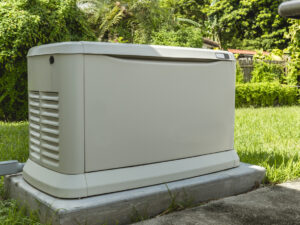
When the power goes out, your generator can be a lifesaver, keeping your home or business running smoothly. But how long can your generator actually run before it needs a break? The answer depends on several factors, including the type of generator you have, its fuel source, and proper maintenance.
Whether you own a portable generator for occasional outages or a whole-home standby system, understanding its limits can help you prepare for emergencies and keep your power supply uninterrupted.
Fuel Type and Your Generator's Runtime
The type of fuel a generator uses is a major factor in determining how long it can run. Different generators operate on gasoline, propane, diesel, or natural gas, and each fuel type has its own runtime considerations.
Gasoline Generators
If your portable generator runs on gasoline, it typically has a limited runtime due to its smaller fuel tank. Most models can run anywhere from 6 to 18 hours before needing a refill. However, gasoline isn’t ideal for long-term operation since it degrades over time and may not be available during an extended power outage.
Propane Generators
Propane burns cleaner than gasoline and can be stored indefinitely, making it a popular choice. The runtime of your propane generator depends on the size of your propane tank. A typical 20-pound propane tank will power your generator for about 5 to 8 hours, while a larger 100-pound tank can extend runtime significantly.
Diesel Generators
Known for efficiency and durability, diesel generators can often run for 24 to 48 hours continuously before needing refueling. If your home or business relies on long-term backup power, a diesel generator may be the right choice.
Natural Gas Generators
If your standby generator is connected to a natural gas line, it can theoretically run indefinitely as long as there is an uninterrupted gas supply. This makes it an excellent option for extended outages. Keep in mind, your natural gas generator still requires periodic maintenance to keep it running smoothly.
Maintenance and Cooling Periods
Even if your generator has the fuel to run for days, that doesn’t mean it should. Continuous operation can cause overheating and excessive wear on your generator’s engine.
Most manufacturers recommend shutting down your generator for at least 15 to 30 minutes every 24 hours to allow it to cool and for basic maintenance checks. If you're using a portable generator, regular oil changes are crucial—many require fresh oil after every 50 to 100 hours of use. Your standby generator is designed for longer runtimes but will still benefit from routine maintenance.
How Long Should You Run a Generator Continuously?
The length of time you can safely run a generator depends on its design and specifications.
- Portable generators typically need a break after a full tank of fuel, which is usually 8 to 12 hours.
- Standby home generators are built for extended use and can operate for several days or even weeks with proper maintenance and fuel supply.
- Industrial diesel generators are capable of running for days at a time, but they require oil and filter changes after every 100 to 200 hours of operation.
The amount of power your generator supplies also affects its runtime. Running your generator at or near full capacity drains fuel faster and puts extra strain on the engine. Keeping the load between 50% and 75% of its maximum output can improve efficiency and prolong operation. This means selectively powering essential appliances rather than running everything in your home at once.
Signs It's Time to Give Your Generator a Break
Even if your generator still has fuel, running it for too long without a break can lead to mechanical failures. Here are a few indicators that it’s time to shut it down for maintenance:
- Overheating or a burning smell
- Unusual noises or vibrations
- Decreased power output or flickering lights
- Oil or fuel leaks
Safety Considerations for Extended Use
If you need to run your generator for long periods, safety should always be a top priority. Proper ventilation is essential, as your generator produces carbon monoxide, which can be deadly in enclosed spaces. Always position your portable generator outside, at least 20 feet away from doors and windows. For your standby unit, professional installation ensures safe operation and compliance with local codes.
Routine checks for fuel leaks, worn parts, and electrical connections can also prevent unexpected shutdowns and potential hazards. Investing in a transfer switch can make running your generator more efficient and safer by preventing dangerous backfeeding into the electrical grid.
Need Reliable Backup Power? Contact Home Power Systems
At Home Power Systems, we specialize in generator maintenance, repairs, and replacement to keep your home or business powered during an outage. Whether you need a new standby generator or expert advice on extending your generator’s lifespan, our team is here to help. Contact us today to schedule a consultation or maintenance and ensure your backup power is always ready when you need it most.



